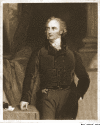Ductal-lobar organisation of human breast tissue, its relevance in disease and a research objective: vector mapping of parenchyma in complete breasts (the Astley Cooper project)
- PMID: 16879731
- PMCID: PMC1779472
- DOI: 10.1186/bcr1527
Ductal-lobar organisation of human breast tissue, its relevance in disease and a research objective: vector mapping of parenchyma in complete breasts (the Astley Cooper project)
Abstract
A human breast has many lobes, which are highly variable in size and shape, each with one central duct, its peripheral branches and their associated glandular tissues. Realising the potential of new endoductal approaches to breast diagnosis and improving our understanding of breast cancer precursors will require greatly improved knowledge of this ductal-lobar anatomy and the distribution of cancer precursors within it. This architecture is very challenging to study in its entirety: whole-breast lobe mapping has only been achieved for two human breasts. Clearly, much more efficient techniques are required. Streamlined data capture and visualisation of breast parenchymal anatomy from thin and thick sections in a vector format would allow integrated mapping of whole-breast structure with conventional histology and molecular data. The 'Astley Cooper digital breast mapping project' is proposed as a name for this achievable research objective. Success would offer new insights into the development of breast cancer precursor lesions, allow testing of the important 'sick lobe' hypothesis, improve correlation with imaging studies and provide 'ground truth' for mathematical modelling of breast growth.
Figures
References
-
- Cooper AP. On the Anatomy of the Breast. London: Longman, Orme, Green, Brown and Longmans; 1840.
Publication types
MeSH terms
LinkOut - more resources
Full Text Sources


